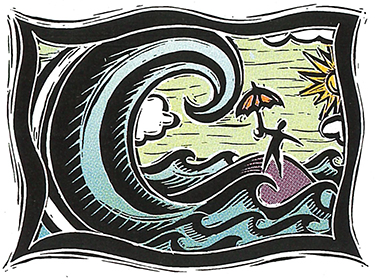Storm-sheltered shores not safe from tsunamis, research shows
 By re-creating the deadly effects of a giant tsunami, UW engineers have found that even localities sheltered from storm-driven waves can be wiped out by the earthquake-driven tsunamis.
By re-creating the deadly effects of a giant tsunami, UW engineers have found that even localities sheltered from storm-driven waves can be wiped out by the earthquake-driven tsunamis.
“While it would be difficult to prepare for such a disaster, our study suggests that no one who lives on an ocean island anywhere in the world is immune from the reach of a strong tsunami,” warns UW Civil Engineering Professor Henry Yeh, who helped recreate a giant wave in an artificial wave basin.
Yeh and colleagues studied a 1992 wave that killed 263 people in the Flores Islands of Indonesia. That tsunami was more than 75 feet high in places and traveled 225 miles per hour.
Using a U.S. Army Corps of Engineers facility in Mississippi, the engineers found that villages on the far side of one island were devastated because the island cleaved the wave in two. When the two halves met again on the leeward side of the island, the waves collided. The impact was worse than on the side of the island first hit by the wave, Yeh explained.
The experiment puts to rest the myth that coastal island settlements naturally protected from normal winds—or even hurricanes or typhoons—would be equally safe from the reach of a tsunami.